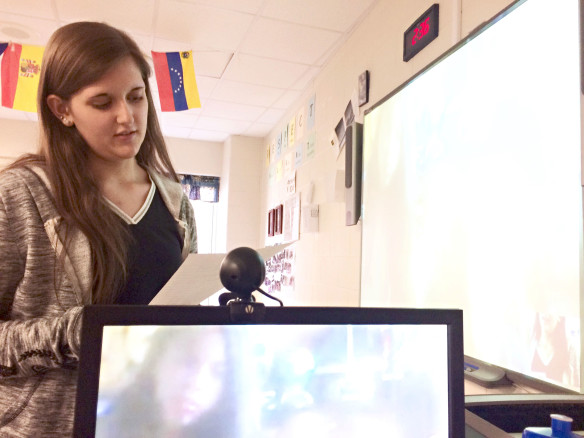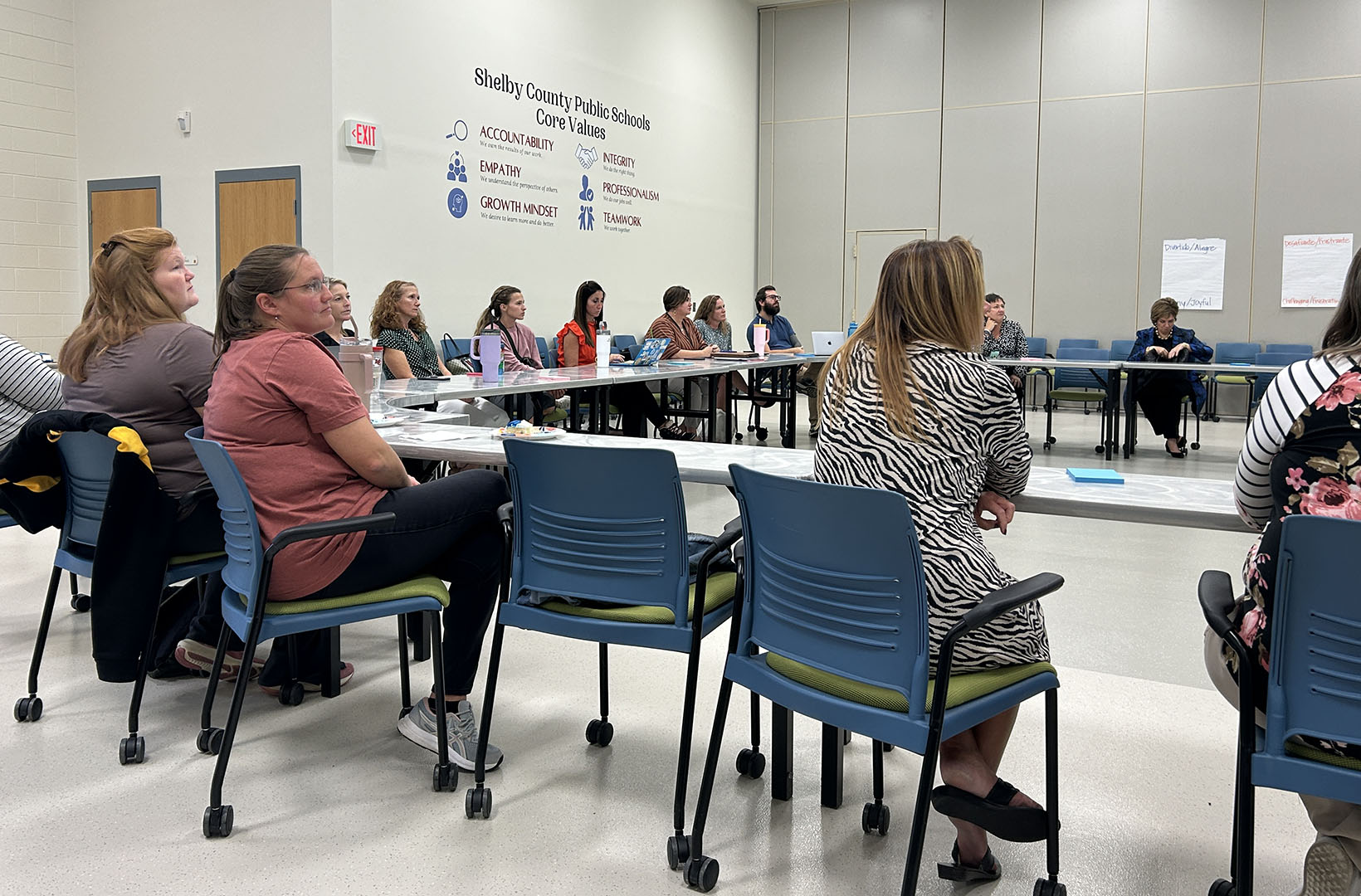
Sophia Sergent, a student at Harlan County High School, speaks Spanish to a native-Spanish speaker over Skype in a class.
Photo submitted by Emmanuel B. Anama-Green
By Emmanuel B. Anama-Green Jr.
emmanuel.anama@harlan.kyschools.us
Students in my classes at Harlan County High School are able to take their learning experiences to new levels via Spanish class. While the school has a poverty rate so high that all students receive free lunches, one would not recognize this when it comes to Spanish classes.
I grew up in Owsley County, an area that has frequently made national news for its astonishing rates of poverty and individuals who receive public assistance. However, I managed to study abroad in college in Spain and Costa Rica. Following my undergraduate degree, I was able to volunteer my time in Ecuador, Peru and Colombia for more than 2 years. Most recently, I’ve been pursuing a second master’s in Guanajuato, Mexico, through Southern Oregon University.
I want my students in Harlan County to know that they can achieve similar, if not greater, adventures in life as I have. I want to even the playing field between them and their counterparts in more economically advantaged areas of the state.

Emmanuel B. Anama-Green Jr.
In my class, I apply many of the research-based suggestions for poverty by renowned brain-based education researcher Eric Jensen, such as incorporating music, movement and rigor into my pedagogical practices. Students learn Spanish through a variety of methods, but a strong emphasis is placed on learning strategies that are far from the traditional textbook methods. For the interpretive phases of reading and listening, I search out video clips that include a variety of music and listening approaches. During the interpersonal phases of the integrated performance assessments, I often pair students with classmates they may not have known previously.
However, students tend to be most engaged in the instructional activities that I developed with the use of Skype. In one of my units in Spanish 1-B, students are challenged to conduct research in a way they may not have envisioned. Students must call hotels in Spanish-speaking countries using the telephone feature of Skype. They find the phone numbers of these hotels using Google Maps and then call them – all while speaking in Spanish – in class in front of their peers. Students ask where the hotels are located, the rates per night for a specific date, which tourist attractions are nearby and various other amenities-related questions. To enhance the students’ geographical knowledge, I challenge my students to find hotels in at least four different Spanish-speaking countries.
In Spanish 2-A, students conduct similar research when calling restaurants. In this unit, students research restaurants and typical dishes in a variety of Spanish-speaking countries. Using Skype, they call the restaurants and ask the questions that they have prepared.
While students are often fearful of speaking in front of their peers, they generally fulfill the Skype tasks without too much reservation. For students with extreme nervousness, I allow them to come in during my planning period for a small point reduction. Nonetheless, all students are held to the same standard of speaking Spanish in live time to someone in a Spanish-speaking country.
Through collaboration with the Global School Project in Venezuela, I also have challenged my students to converse in Spanish via the face-to-face feature of Skype with teachers and students in South America. Students recently were able to ask questions related to the beauty of Venezuela and discuss current events in the country.
Another important aspect of Eric Jensen’s research focuses on relationships and allowing students to see that their teacher is a real person. I grew up with some of the same problems that students in Harlan County are facing. At times, I mentions small aspects of these childhood memories – both pleasant and unpleasant – in my teaching. This adds validity to the idea that they, the students, can succeed and be successful.
I also see the value of Spanish in their immediate surroundings. Through the writing of grants, for example, I seek out ways to take my students on educational field trips where they can use the target language. I recently was able to take my students to the predominately Hispanic community of Morristown, Tenn., where they visited a panadería (Hispanic bakery), tortilleria, supermercado mexicano (Hispanic supermarket), and taquería (taco stand).
Before the trip, one student who had been a behavioral issue said she didn’t see the value in learning Spanish. After the trip, her reflection statement revealed new reasons why learning Spanish was important. She has since been very active in my classes.
While teaching Spanish in a school district with a high poverty rate can be challenging, it has its rewards.
Emmanuel B. Anama-Green Jr. is a Spanish teacher at Harlan County High School. He is very involved in the Kentucky World Language Association and serves as a KWLA Board Member, is a member of the Innovative Teacher Leader Cohort through the Fund for Transforming Education in Kentucky, the Kentucky Education Association, the American Council on the Teaching of Foreign Languages, the American Association of Teachers of Spanish and Portuguese, and numerous other professional organizations.



[…] article originally appeared in Kentucky Teacher on April […]